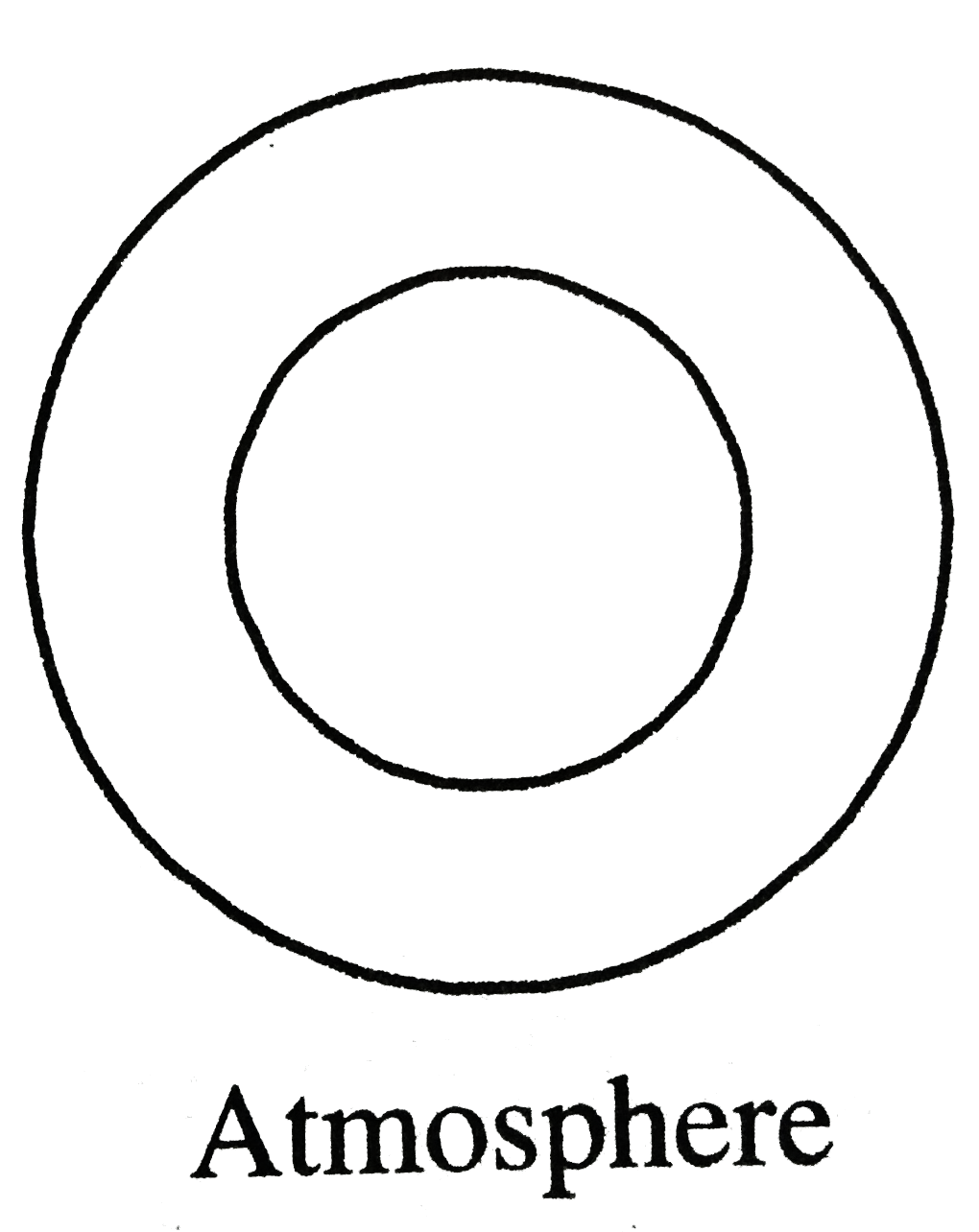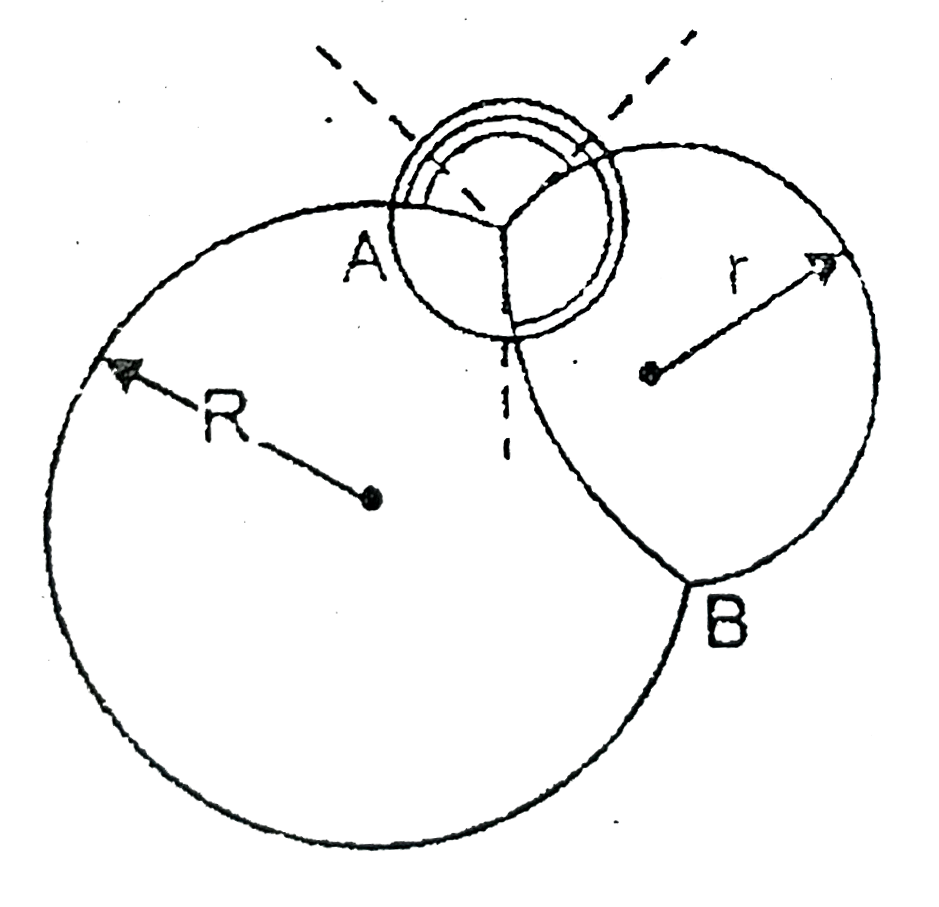A soap bubble of radius r is placed on another bubble of radius 2r. The radius of the surface common to both the bubbles is
2r concave towards P
2r concave towards Q
3r concave towards P
3r concave towards Q
The correct Answer is:A
Excess of pressure in two soap bubbles are
pP=4Tr
and pQ=4T2r=2Tr
∴ Pressure difference Δp=PP−PQ
=4Tr−2Tr=2Tr
Let radius of curvature of common interface is R then
4TR=2Tr=2Tr
Let radius of curvature of common interface is R then
4TR=2Tr⇒R=2r
Excess of pressure is higher in P, so interface will concave towards P.
Topper's Solved these Questions
Similar Questions
A spherical soap bubble of radius 2 cm attached to the outside of a spherical bubble of radius 4 cm. Find the radius of curvature of the common surface.
View SolutionA soap bubble A of radius 0.03 m and another bubble B of radius 0.04 m are brought together, so that the combined bubble has a common interface of radius r, then the value of r is
View Solution
Knowledge Check
A soap bubble of radius r1 is placed on another soap bubble of radius r2(r1<r2). The radius R of the soapy film separating the two bubbles is :
Ar1+r2B√r21+r22C(r31+r32)Dr2r1r2−r1A soap buble of radius 1.0 cm is formed inside another soap bubble of radius 2.0 cm . The radius of an another soap bubble which has the same pressure difference as that between the inside of the smaller and outside of large soap bubble , in metres is
A6.67×10−3B3.34×10−3C2.23×10−3D4.5×10−3A soap bubble of raidus R is surrounded by another soap bubble of radius 2R, as shown. Take surface tension =S. Then the pressure inside the smaller soap bubble, in excess of the atmosphere presure will be
 A4S/RB3S/RC6S/RDnone of these
A4S/RB3S/RC6S/RDnone of these
A soap bubble of radius 'r' is blown up to form a bubble of radius 2r under isothemal conditions. If σ be the surface tension of soap solution , the energy spent in doing so is
View SolutionA spherical soap bubble of radius 1 cm is formed inside another of radius 4 cm. The radius of single soap bubble which maintains the same pressure difference as inside the smaller and outside the larger soap bubble is --------------- cm.
View SolutionA spherical soap bubble of radius 1 cm is formed inside another of radius 4 cm. The radius of single soap bubble which maintains the same pressure difference as inside the smaller and outside the larger soap bubble is_____cm.
View SolutionA soap - bubble with a radius 'r' is placed on another bubbles with a radius R (figure). Angles between the film at the point of contact will be -

View SolutionIf a soap bubble of radius 3 cm coalesce with another soap bubble of radius 4 cm under isothermal conditions the radius of the redultant bubble formed is in cm
View Solution
